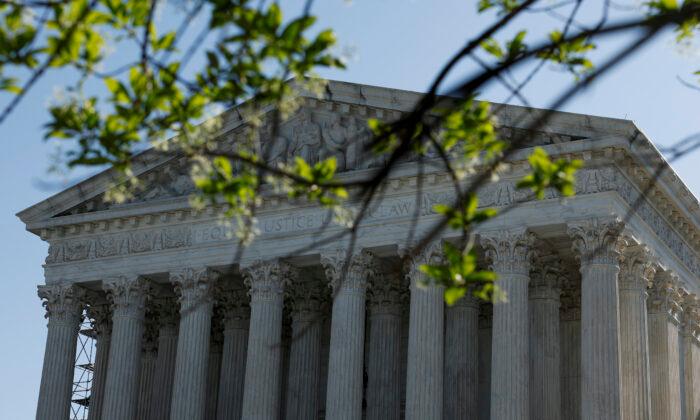The Supreme Court won’t be announcing its decisions in most of this year’s big cases until June or early July. But the court recently agreed to consider a case that could trim the power of the “deep state.”
The “deep state” is a web of federal administrative agencies, career politicians, lobbyists, and compliant mass media. It acts as a shadow government that largely sets the nation’s political agenda.
The deep state has been around for decades but is more powerful than ever because the federal government is larger and more intrusive than ever. Most Americans witnessed deep state power for the first time during the Trump administration, when it publicly resisted the authority of an elected president.
The ‘Deep’ Background
The Constitution created a democratic federal republic. It instituted an elected Congress to make laws, an elected president to enforce laws, and an appointed judiciary to resolve disputes under those laws.This process of constitutional distortion slowed after 1944, but it didn’t end. It continued for the entire six decades that liberal justices made up a majority—that is, until late in the 20th century.
Liberal justices enormously increased the authority of Congress. For example, they transformed Congress’s power to regulate Commerce (Article I, Section 8, Clause 3) into authority to oversee the entire national economy. They changed Congress’s power to tax (Article I, Section 8, Clause 1) into a license to spend for almost any purpose. These and other changes rendered the federal government supreme in American life.
Not only did liberal justices permit Congress to exercise almost unlimited power, but they also permitted Congress to delegate it to unelected administrative agencies. Congress may (and frequently does) pass a statute creating an agency and telling it to regulate some broad swathe of activities, and—voilá!—Americans are saddled with a new set of bureaucratic masters.
It’s true that the court has stated restrictions on Congress’s ability to delegate, but those statements are mostly empty words. The justices readily approve vague and undefined delegations such as “this agency may regulate the airwaves in the public interest.”
How Chevron Fits In
Just as the court imposed an almost impossible burden of proof on citizens challenging a law’s constitutionality, the Chevron doctrine imposes a similar burden on citizens challenging the power of federal agencies. The doctrine states that an agency almost always has the final word on whether federal law gives it the powers it claims. Courts must defer to these self-interested agency decisions unless they’re “unreasonable.” In constitutional law, it’s exceedingly difficult to prove that a government decision is “unreasonable.”The Un-Conservative Supreme Court
As I’ve explained in several Epoch Times essays, contrary to the mainstream media narrative, the current Supreme Court doesn’t have a 6–3 conservative majority. Rather, the bench is highly fragmented: It contains three liberal activists, one nearly pure originalist, one justice who usually defers to government decisions (liberal or conservative), and four others in between.As a result, the current court has left almost all the liberal case precedents in place. (The principal exception, Roe v. Wade, was an unusually weak decision but even so it was overruled by only a bare 5–4 majority.) When the media characterize a ruling as “conservative,” it’s often because the court has applied a liberal precedent that liberals no longer find convenient.
Criticisms of the Chevron Doctrine
On the other hand, there’s some evidence that the justices may overrule Chevron. Several justices have been critical of the Chevron doctrine. They and other commentators point out that:- the doctrine makes an agency a judge in its own cause, thereby violating the Constitution’s guarantee of due process of law
- it encourages agencies to expand their power
- administrative agencies are part of the executive branch, so allowing them to make legislative or judicial decisions violates separation of powers
- the Chevron decision wasn’t well considered, and over time, the Supreme Court has had to carve out exceptions.
The Present Case
The case the court agreed to hear is Loper Bright Enterprises v. Raimondo (pdf). Loper Bright Enterprises is the plaintiff. It operates fishing vessels in the Atlantic Ocean.The defendant, Gina Raimondo, is the secretary of commerce. Part of her department is the National Marine Fisheries Service (NMFS), which Congress created to regulate fishermen.
Federal law allows NMFS to require fishing boats to carry official observers to ensure compliance with federal regulations. That much is undisputed. But the NMFS also claims that federal law allows it to force fishermen to bear the cost of paying the observers. Loper Bright disputes that.
The case will probably be argued in the fall and decided before June 30, 2024.





